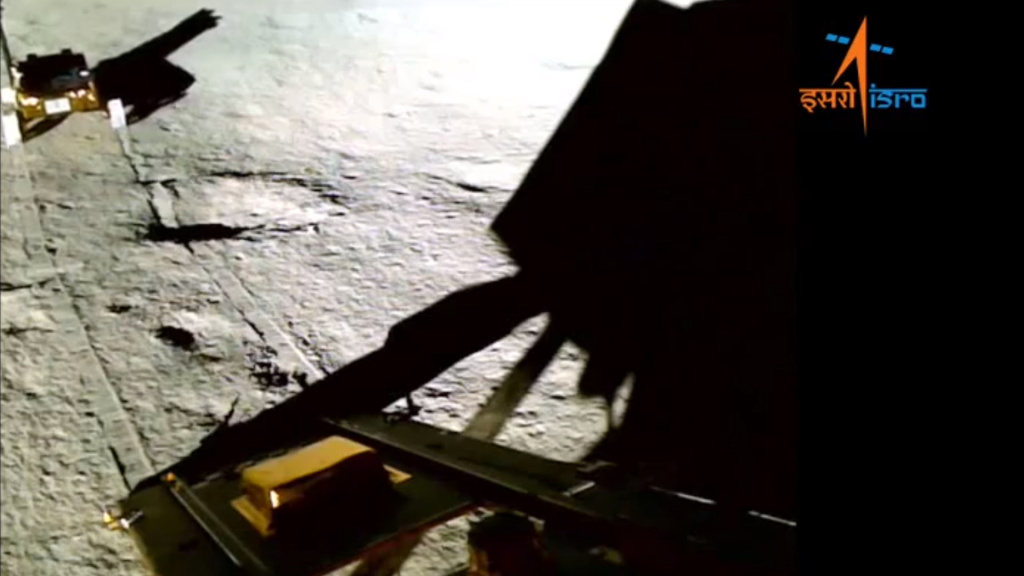
Exploring the Moon’s South Pole: Unveiling its Secrets with Indian Rover Pragyan’s Visuals and Recordings
ISRO, or the Indian Space Research Organization, continues to make history and while doing so, it publishes what the South Pole of the Moon looks like through the images and footage taken by its Pragyan rover. After India became the first country to successfully land its Chandrayaan-3 spacecraft on this part of the moon, its rover continues its lunar mission in the same vein for now.
Namely, among other things, ISRO has published two images taken by its rover Pragyan on the moon, and they show the large crater it encountered and the trajectory correction it made to avoid falling into it.
The crater has a diameter of four meters, and it was in the trajectory of the rover, which could potentially endanger it, and ISRO sent it a command to change its trajectory. After executing the order, the Pragyan rover is now safely continuing its drive on the new path that it has also imaged.
It continues the drive to fulfill the objective of the Indian lunar mission, namely to explore the south pole of the moon and its surface in situ. This part of the Moon's surface is normally a difficult target for space missions, given that it has precisely the uneven terrain that the rovers need to navigate. However, it is also important because it is said to contain water ice that could be used for fuel, oxygen and water, according to scientists.
Before the latest images, ISRO initially released a video showing Pragyan leaving the Chandrayaan-3 lander that brought him to the South Pole of the Moon. In the video, he steps off the ramp and begins the first few meters of the lunar ride.
The organization later wrote that two scientific instruments were turned on during the plant's ride and that it moved eight meters. Then on Saturday, a new video shot by the Chandrayaan-3 spacecraft arrived, showing the rover moving in and out of its line of sight.
 ISRO screenshot
ISRO screenshotAs India claims, both the spacecraft and the rover are equipped with instruments to measure the lunar environment. It was thanks to them that India carried out the so-called “Chandra thermophysical experiment on the surface” which allowed scientists to make graph about the temperature of the moon's surface.
It was carried out thanks to a probe about eight centimeters in size, which was inserted into the upper layer of the earth, and it showed drastic changes in temperature between the surface of the moon and the soil below.
Given that India is already announcing the progress of its mission, we can certainly expect new discoveries as well as photo and video material that will be made in the process. The success of the Indian mission is also reflected in the fact that it is the first country that managed to do something like this, just a few days after the Russian Luna-25 spacecraft, which had the same goal, crashed on the moon's surface.